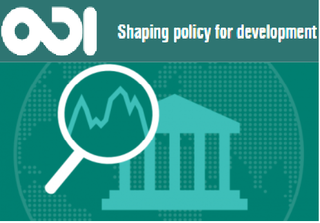
Posted by Richard Allen[1]
How do finance ministries go about performing their tasks, what do they look like as organizations, and does it matter how they are organized? What makes a finance ministry capable of doing its job?
The Overseas Development Institute (ODI) has published a report[2] investigating the capabilities of finance ministries, based on case studies of Germany, Mexico, Nepal, Uganda, Sierra Leone, South Africa, the United Kingdom, and Vietnam. On June 6, 2016, Her Majesty’s Treasury (the U.K’s finance ministry) and the ODI organized a High-Level Roundtable to discuss the findings of the report. Opening remarks were made by the Rt Hon Greg Hands, Chief Secretary to the Treasury, and were followed by a presentation of ODI’s report, remarks by H.E. Do Hoang Anh Tuan, Vice Minister of Finance of Vietnam, and Edmund Koroma, Financial Secretary of Sierra Leone, and a general discussion. Participants in the Roundtable included representatives of the Treasury, ODI, the IMF, think tanks, consultancy firms, academia as well as specialist media. In the afternoon, a workshop was held to discuss the ODI’s report with a wider audience of experts and practitioners.
Participants at the two meetings were asked to offer their views on the following questions:
- Are there organizational models, institutions, and processes that have merit across many different countries, such as merging separate ministries of finance, economics and planning?
- What can finance ministries learn from the experience of other countries, and what not?
- How can finance ministries in advanced countries best assist their counterparts in developing countries and emerging markets?
Participants in the two events offered a wide range of views on these questions. Among the ideas discussed were the following:
- Organizational models of finance ministries are strongly influenced by the national characteristics of a country – its legal framework and administrative culture (Anglophone, Westminster, Francophone, Scandinavian, and so on) – as well as its political economy and governance arrangements. These differences need to be recognized when considering how to improve a finance ministry’s capability.
- Developing countries can learn from the experience of more advanced countries in improving the capability of their finance ministries, but uncritical copying of advanced country models should be avoided.
- Assessing the efficiency and effectiveness of core finance functions - such as macro-fiscal forecasting, analysis of tax policies, budget preparation, cash and debt management, financial reporting – is key. Organizational structures should follow functions, not the other way around.
- Finance ministries in small countries often have special challenges in improving performance, because a handful of staff may be personally responsible for carrying out a core function such as preparing a debt management strategy or conducting a strategic review of the budget. Absence or removal of these staff may make it difficult for the function to be delivered on a continuous basis. On the other hand, finance ministries that have only a limited pool of talented staff do not have the luxury of wasting resources on functions that are less than critically important.
- When developing action plans based on diagnostic assessments, finance ministries should include measures that enhance their capability to perform the functions concerned. Does the action plan require for example, an increase in the staff complement, improved skills, upgraded IT systems, better communications with other departments and units of the ministry and/or external stakeholders, or an improved role for middle- and senior managers in decision making within the finance ministry? Do salary structures and/or (as in Sierra Leone and many fragile states) senior staff positions paid for by donors act as a constraint in improving capability, and how should this be dealt with?
- It may be useful for finance ministries to undertake reviews of their overall organizational structure from time to time, in order to focus on areas of weakness in capabilities, weed out non-core functions and strengthen others, reduce the role of organizational “silos”, and strengthen horizontal communication within the ministry. But there can be constraints on such reviews in some cultures, e.g., because the organizational structures of government agencies are defined by law. In such cases, a better approach may be to focus on specific functions or departments of the ministry – such as the macro-fiscal unit, the budget department, or the debt management office - where the minister of finance has more discretion to modernize structures and increase capabilities. It may also be helpful to link a review of the functions and capabilities of a ministry to the introduction of new business processes and IT systems.
[1] Richard Allen is a Visiting Scholar and Public Financial Management Expert with the Fiscal Affairs Department of the IMF.
[2] Philipp Krause, Sierd Hadley, Shakira Mustapha, and Bryn Welham. June 2016. The Capabilities of Finance Ministries. London: Overseas Development Institute.
Note: The posts on the IMF PFM Blog should not be reported as representing the views of the IMF. The views expressed are those of the authors and do not necessarily represent those of the IMF or IMF policy.







